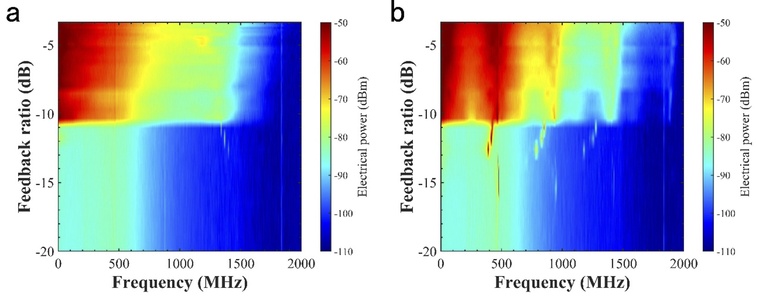Recently, Associate Professor Wang Cheng’s group at SIST developed a broadband hyperchaos laser source in the mid-infrared regime. The related work has been published in Light: Science & Applications in an article entitled “Mid-infrared hyperchaos of interband cascade lasers”.
Chaos is a ubiquitous phenomenon in nature, and is a disordered behavior similar to a random process generated by a deterministic dynamic system. Atmosphere is a typical chaotic system, which was first found in 1963 by Edward Lorenz, a U.S. meteorologist. It was dubbed as “butterfly effect” and then well known to the public.
Laser diodes can produce light chaos under certain conditions, and is valuable for applications in secure optical communication, high-speed true random number generation and Lidar systems. In recent years, chaos has also been used in the domain of optical reservoir computing to advance the development of artificial intelligence. However, most existing laser chaos is in the spectral range of near infrared, which limits its applications in mid-infrared and other spectral ranges.
Prof. Wang Cheng’s group has long been committed to the research of interband cascade lasers (ICLs) in the mid-infrared band. ICLs were proposed in 1995 by Prof. Rui. Q. Yang from Oklahoma University. By applying proper perturbations to the ICLs, Prof. Wang Cheng’s group successfully produced hyperchaos, which is more complex than common chaos (see Figure 1). It is found that the light chaos exhibits three positive Lyapunov exponents, suggesting that the chaos is hyperchaos with high dimensional complexity. In addition, the frequency domain analysis shows that the hyperchaos covers a broad frequency ranging up to the gigahertz level (see Figure 2), which is highly desirable for high-speed signal processing and transmission. Owing to the high-transmission windows (3-5 μm and 8-12 μm) of the atmosphere, this mid-infrared hyperchaos can be used in long-reach free-space optical communication links and remote chaotic Lidar systems in the future.

Figure 1. Time domain analysis of the mid-infrared hyperchaos laser source.

Figure 2. Frequency domain analysis of the mid-infrared hyperchaos laser source.
Article link:
https://doi.org/10.1038/s41377-021-00697-1